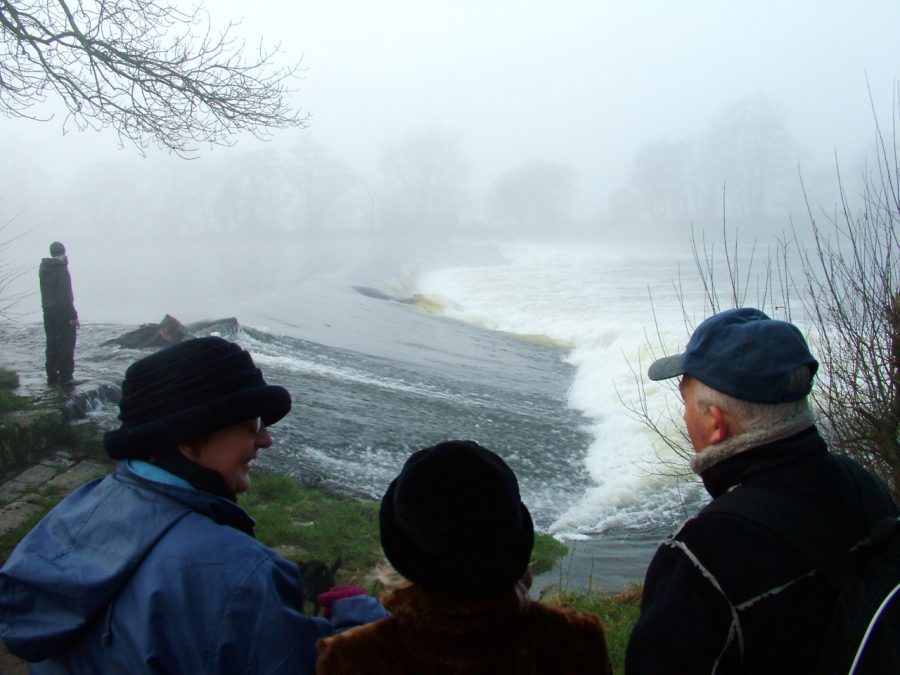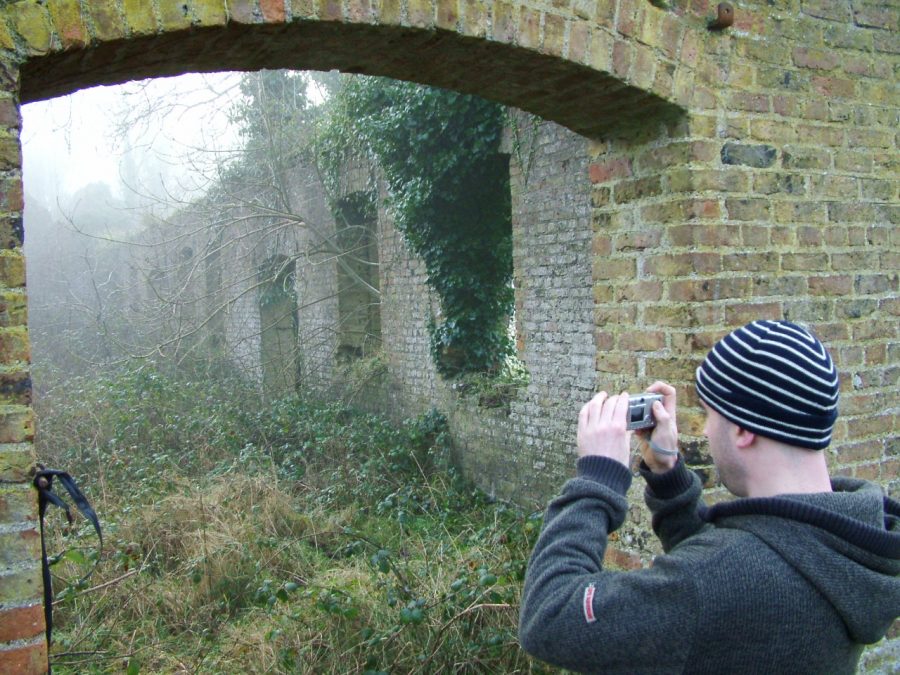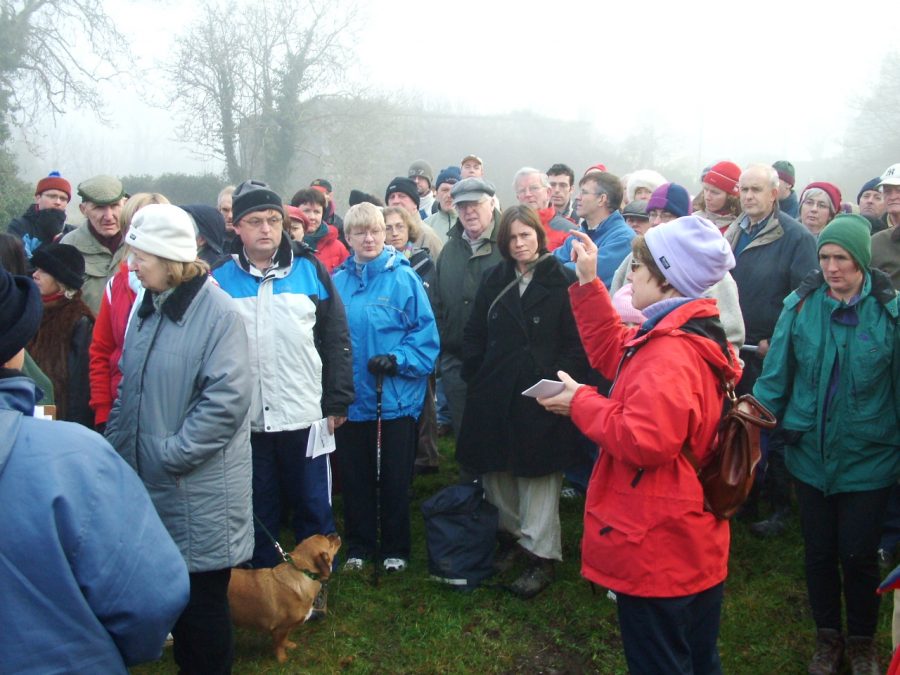Ballincollig remained a small community till 1794 when Charles Henry Leslie, a leading Cork merchant established the local gunpowder mills, a unique industrial complex in southern Ireland. Shortly after, Oriel House was built by Leslie as his residence. Increased concern about the security of the gunpowder mills, coupled with the British government of the day’s policy for creating its own monopoly of gunpowder manufacture in these islands, greatly influenced the Board of Ordnance’s decision to buy out Leslie in 1805.
In March 1805 the Board appointed its chief clerk of works for powder mills, Charles Wilkes, as superintendent of the Ballincollig gunpowder mills. Wilkes began by improving access to the complex from the old Killarney road to the north, by entirely rebuilding Inniscarra Bridge replacing the six arched (original date of construction unknown) with twelve semi circular arches. The area of the barracks and mills, including administration buildings, a network of canals and the new cavalry barracks, was greatly expanded in the period 1806-15, and the greater part of the 431 acres involved was enclosed behind a high stone wall.
In 1810, the Army Barracks were built in town to protect the supply of gunpowder. The outer perimeter stone walls extended from the eastern gate of the mills to Inniscarra Bridge. Ballincollig Barracks was located to the northern side of the Main Street in Ballincollig town centre.
In 1837, the army barracks contained accommodation for eighteen officers and 242 non-commissioned officers and privates. In the centre of the quadrangle, there were eight gun sheds and near them were the stables and offices. Within the walls was a large and commodious school room. The police depot for the province of Munster was situated here and the men were drilled till they become efficient and were then drafted off to the different stations in the province .
The interior of the barracks was significantly remodelled in the mid nineteenth century, particularly during the Crimean War period of the 1850’s. The Barrack Square, Officers Mess and Stables were built between 1875 and 1922 and were set back from the road behind the high stone wall. The old Carriage Store was located on the road frontage and was being used by O’Flynn Construction as a Marketing Suite for the new Ballincollig Town Centre development. This Carriage Store has recently been fully restored to its original state exposing the beautiful limestone walls and natural slate roof.
In 1834, the Board of Ordnance sold the Gunpowder Mills to the Tobins, a Liverpool family. In the same year, Thomas Tobin married Catherine Eillis in 1835 and they moved into Charles Henry Leslie’s former house. Catherine was an avid painter so Thomas built an Oriel or a recess with a polygonal window built out from a wall. From this time on, the house became more affectionately known as Oriel House. The mills had lain derelict for 20 years before that.
About the year 1860, circa 500 people were employed in the gunpowder mills. Two of the raw materials for the gunpowder were imported from Sicily (sulphur) and India (saltpetre) and the third, charcoal was produced locally. The River Lee provided the power to turn the waterwheels for grinding the raw materials and manufacturing the gunpowder. Most of the finished product was exported to Liverpool before it was sent onto to Africa.
Thomas Tobin died in 1881 and was buried in Inniscarra. After Thomas Tobin’s Death, Oriel House, (Lady) Catherine moved to Albert House Mansion in London. The house passed through a series of owners; Colonel W.Balfe (1886), J.McKenzie MacMorron (1893), Lt. Col. Onslow (1911), W.J.O. O’Hara (1916). In 1916, the house was set on fire by the republicans but some local people cut the roof joyces and saved the eastern part of the house.
In the early twentieth century, there were a further number of residents, A.F. MacMullen (1938) and Maire Louise Perrins (1947). In 1970, Bill Shanahan bought the house and officially opened it as a hotel in 1983. In recent years, the hotel has undergone renovations and extensions. What is heartening to see is that many of the function rooms are named after key residents of the house such as Thomas Tobin.
As for the mills, in 1888, they were bought by John Briscoe and soon came under the control of Curtis’s and Harvey. The mills closed in 1903 due to the advent of the production of dynamite. The Curtis and Harvey’s mills were then absorbed into Imperial Chemical Industries (ICI). The site was bought by Cork County Council in 1974, who developed it into a public park.
In 2002, the draft County Development Plan designated the complex of the ruins of the Gunpowder Mills as a Protected Structure. A number of structures within the complex were recognised by Cork City Council as having significant heritage / archaeological and architectural merit and restored. The Gunpowder Mills are now in disrepair but the area is still open for walks and exploration.
A book by Ballincollig locals Jenny Webb and Anne Donaldson was published by Nonsuch Ireland Ltd in 2006 on the history and geography of the Ballincollig Gunpowder Mills.
Kieran’s local history articles on Ballincollig Gunpowder Mills:
25 January 2010, Ballincollig Bound (placenames, archaeological sites, early Ballincollig history),
Kieran’s Our City, Our Town, Ballincollig Bound, 28 January 2010 | Cllr. Kieran McCarthy
4 February 2010, Beyond the High Wall, Ballincollig Gunpowder Mills (early development, history, Board of Ordnance, Leslies, Tobins),
Kieran’s Our City, Our Town, 4 February 2010 | Cllr. Kieran McCarthy
11 February 2010, A Productive Process, Ballincollig Gunpowder Mills (production process of gunpowder at Ballincollig),
Kieran’s Our City, Our Town, 11 February 2010 | Cllr. Kieran McCarthy
18 February 2010, The Industrious Landscape, Ballincollig Gunpowder Mills (production process of gunpowder at Ballincollig, 1856 survey of work going on),
Kieran’s Our City, Our Town, 11 February 2010 | Cllr. Kieran McCarthy
25 February 2010, The Familiar and Forgotten, Ballincollig Gunpowder mills (walking around the ruins, ruin ideas, society), Kieran’s Our City, Our Town, 25 February 2010 | Cllr. Kieran McCarthy
– WATCH a short film by Ballincollig Tidy Towns on Ballincollig”s history and present
– Tour through the ruins of the Mills by Jenny Webb, pictures by Kieran McCarthy:


Tour with Jenny Webb of old Gunpowder Mills site, Ballincollig, Cork, January 2006 (picture: Kieran McCarthy)


